Did you know that the world’s largest tennis stadium can host more spectators than some football arenas? Arthur Ashe Stadium’s 23,771-seat capacity isn’t just a number—it’s a testament to the size and scale of the tennis juggernaut today.
From the hallowed grass of Wimbledon’s Centre Court to the innovative design of Louis Armstrong Stadium, today’s premier tennis venues are architectural marvels that blend tradition with cutting-edge technology. These stadiums don’t just host matches; they create unforgettable moments that become part of tennis folklore while shaping how both athletes and spectators experience the sport.
Todays Stadiums are constantly evolving to meet client needs, it is about the sport but it is also about the whole experience, the ease of moving around the stadiums and how easy it is to get a glass of champagne or a hot dog..
Best Tennis Stadiums Around the World

Arthur Ashe Stadium in New York stands out as tennis’s largest dedicated venue, holding 23,771 fans. Its retractable roof and night-match lighting make it a favorite among players and fans alike. A truly magnificent spectacle of a court due to its sheer size and atmosphere.

Wimbledon’s Centre Court brings history to life with its grass playing surface and Royal Box traditions. The only major to be played on the green stuff, this court has seen many incredible battles over the years. This is my favorite stadium, I find the atmosphere magical and there is nothing quite like it. The stadium also holds an impressive 14,979 people.
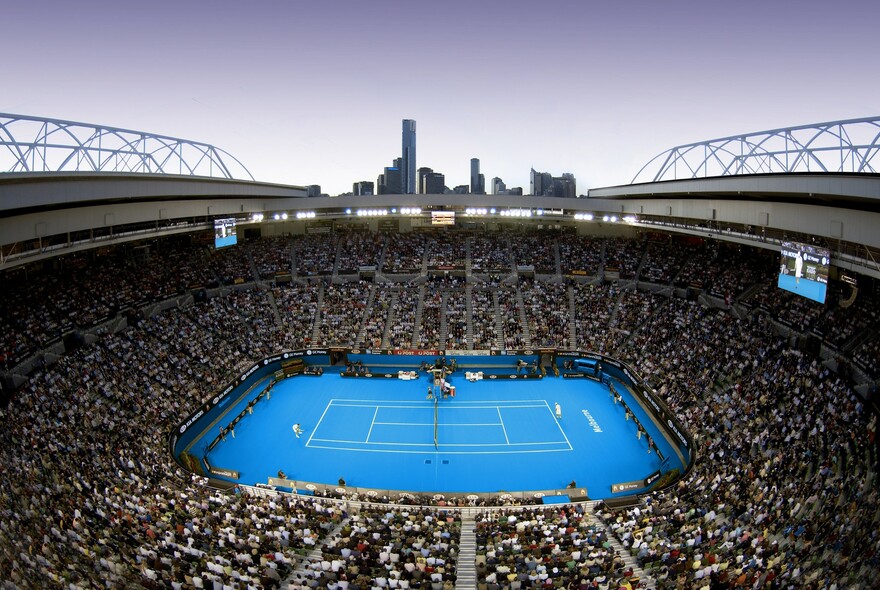
Rod Laver Arena makes the Australian Open special with its adaptable roof and modern facilities. An amazing complex named after Australia’s most famous player of all time. The fast hard court and the usual searing temperatures means there is always an incredible atmosphere here.

At Roland Garros, Court Philippe Chatrier’s clay surface tests players’ stamina while offering top-tier player amenities. Until recently this was Rafael Nadal’s second home, a place he won 14 titles. An incredible, colosseum style arena, it really does feel like two gladiators are sent out to do battle on the clay.
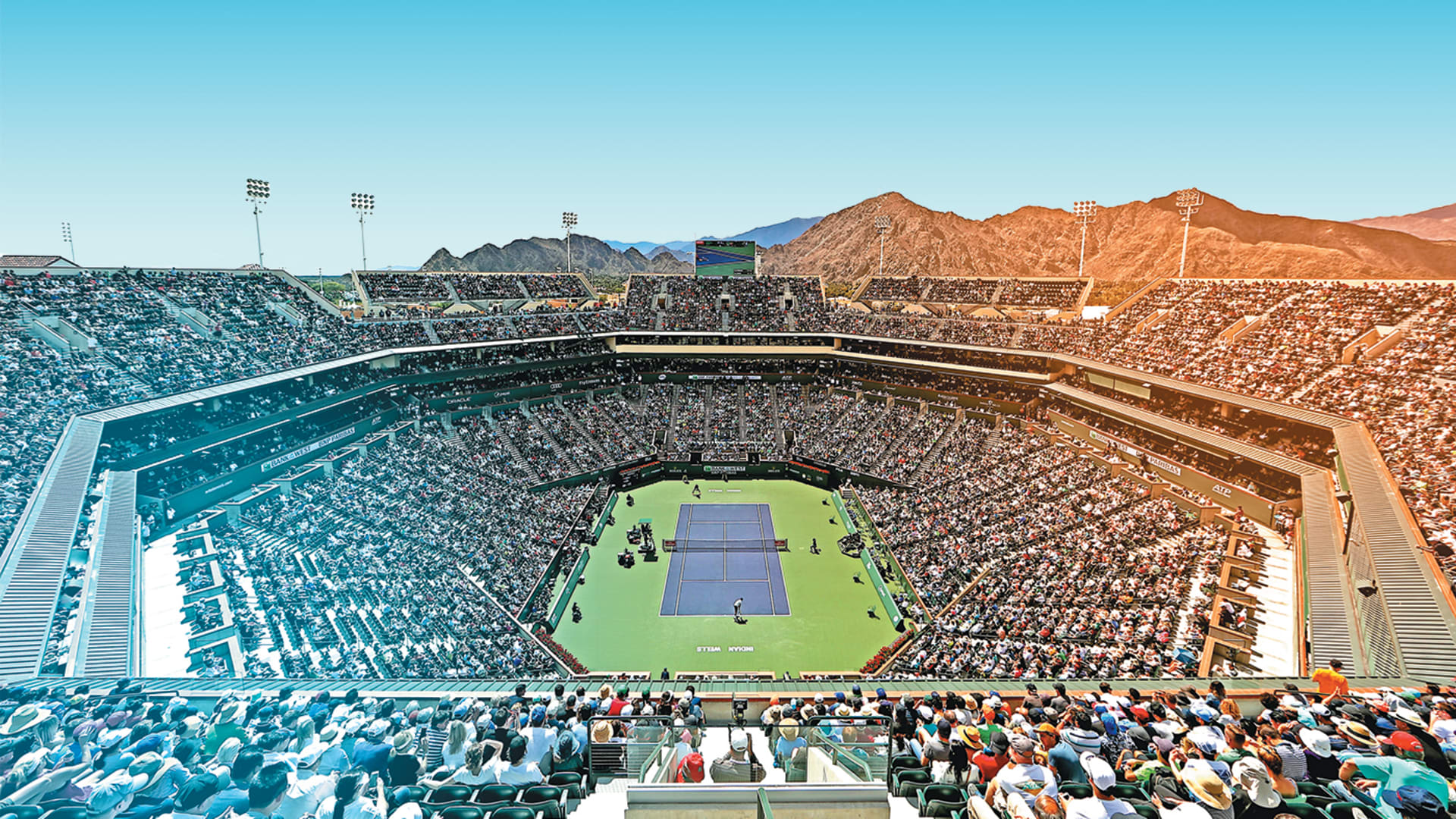
Indian Wells Tennis Garden shines in California’s desert, with players praising its practice facilities and stunning mountain views. The unofficial fifth slam, the entire facility is like a tennis paradise. Incredible practice facilities, it is purpose built so has everything players and fans will ever need and the main stadium has an incredible feel to it.
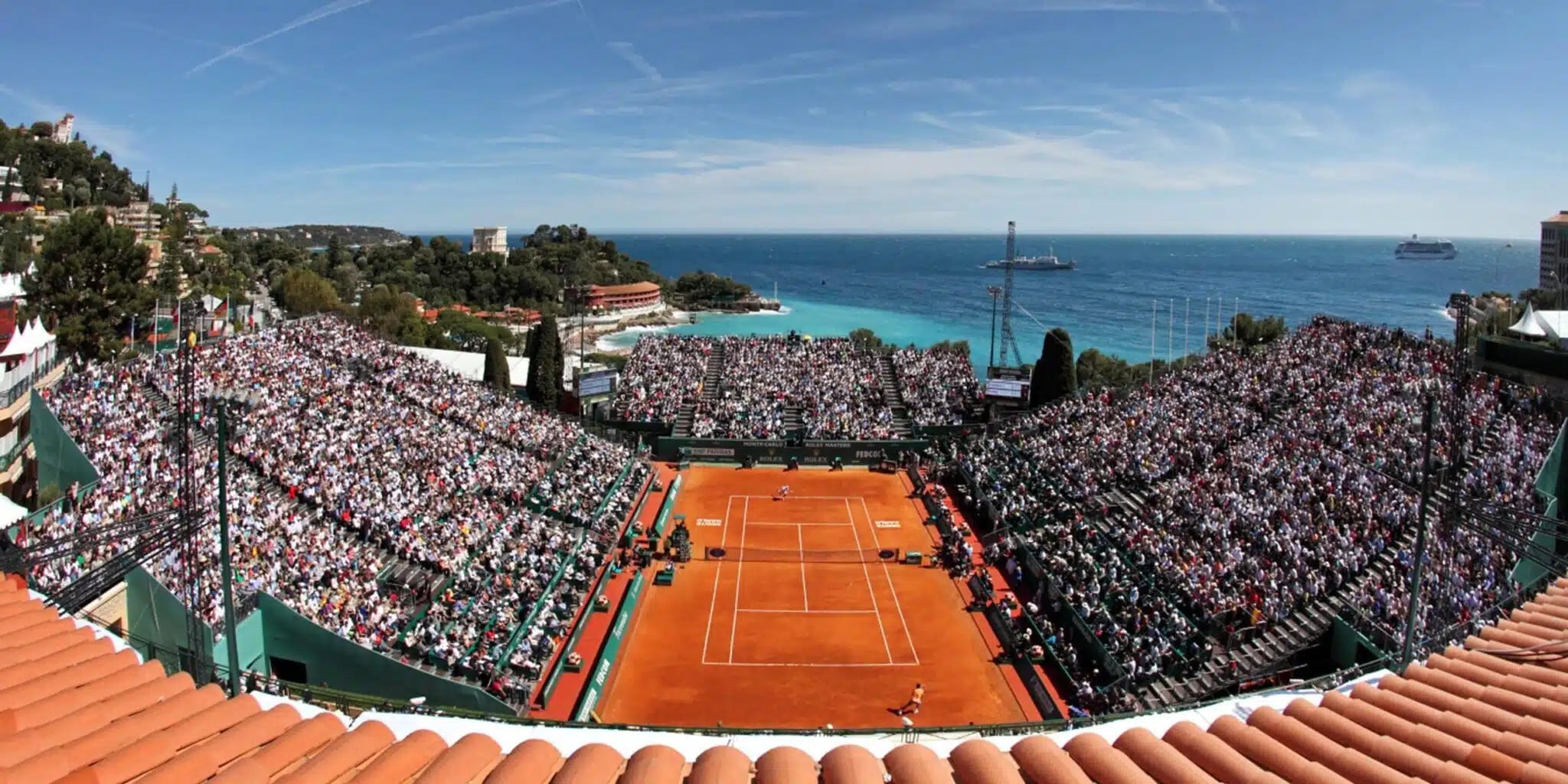
For me, the Monte Carlo Country club is my favorite venue outside of the grand slams. A throw back to a different era, Monte Carlo hosts its fans in a classy venue that sits adjacent to the Mediterranean sea. There is an intimate feel to this place and fans feel like they are really sitting courtside. A must visit for any tennis fan.
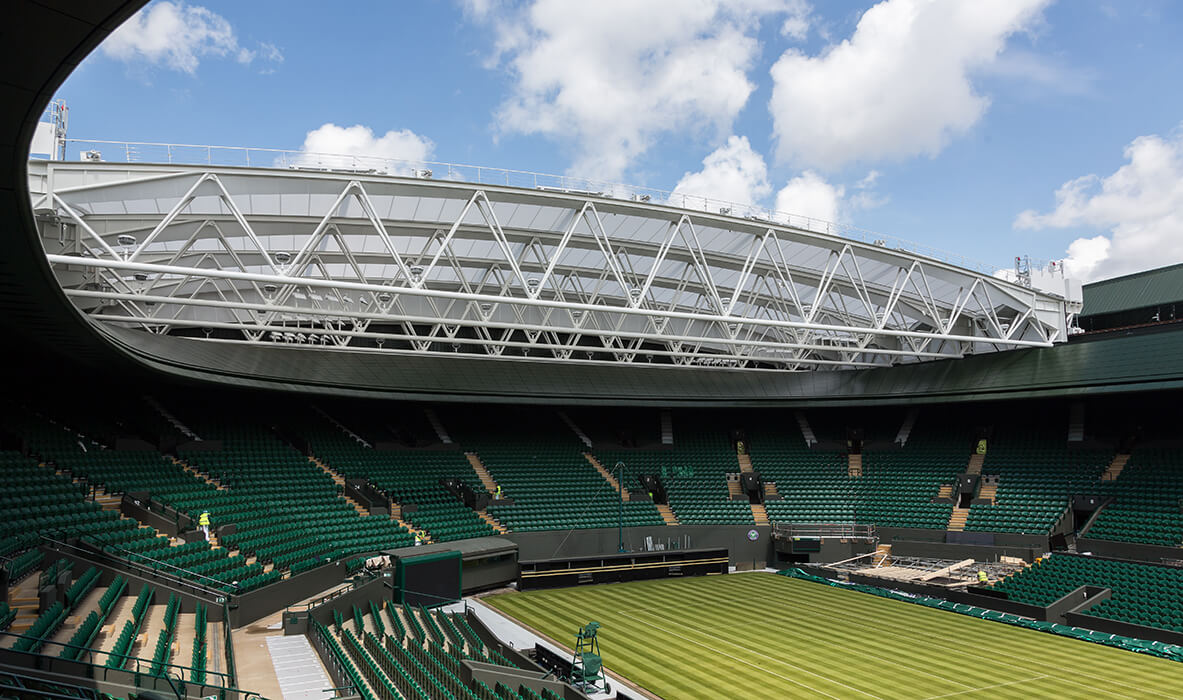
The Wimbledon No. 1 Court joins Centre Court in maintaining tennis excellence. The court was given a roof in 2019 and it stands tall alongside its big brother, center court, in hosting epic matches and since the roof, many late night epics.

Montreal’s IGA Stadium brings high-level tennis to North America. Set in Jarry Park, the center court holds around 11,800 spectators, creating an intimate but lively atmosphere

OWL Arena (formerly Gerry Weber Stadion) in Halle, Germany, is renowned for its retractable roof, ensuring uninterrupted play regardless of weather, and its intimate 12,300-seat capacity, creating a vibrant atmosphere.
The Role of World-Class Tennis Stadiums
Tennis stadiums stand as monuments to sporting excellence, shaping the way we experience professional tennis. These iconic tennis stadiums, from Wimbledon’s Centre Court to Arthur Ashe Stadium, create unforgettable moments in tennis history.
The impact of these venues goes beyond sports. Take the Indian Wells Tennis Garden – it attracts thousands of visitors annually, bringing significant economic benefits to California’s Coachella Valley. Similarly, when the Australian Open takes over Rod Laver Arena, Melbourne sees a surge in tourism and local business activity.
These stadiums also shape tennis culture uniquely. At Wimbledon’s Centre Court, the mix of tradition and modern amenities creates an atmosphere unlike any other sporting venue. The pristine grass courts, the all-white dress code, and the Royal Box tell stories of tennis heritage while offering world-class facilities for today’s athletes.
What Makes a Tennis Stadium World-Class?
When ranking tennis venues, several factors come into play. Location sits at the top of the list – the best stadiums offer easy access while creating an ideal setting for matches. Arthur Ashe Stadium in New York, with its 23,771 seats, sets the standard for capacity among tennis court design venues.
The number of major tournaments a stadium hosts affects its standing. Centre Court at Wimbledon hosts not just any tournament, but the oldest and most prestigious Grand Slam event. Its grass courts and storied history make it a benchmark for excellence in tennis venues.
Modern stadium design plays a key role too. The Louis Armstrong Stadium shows how architecture and sports performance enhances the game, featuring natural airflow that improves playing conditions. Top venues now include retractable roofs, like Rod Laver Arena, allowing play in any weather. Player facilities matter just as much – Indian Wells Tennis Garden offers outstanding practice courts and training areas that athletes praise. These elements combine to create venues that serve both players and fans effectively.
How Stadium Design Shapes Player Performance
The layout of tennis stadiums directly influences how players approach their matches. Court surfaces create distinct playing styles – the low bounce of grass courts at Wimbledon’s Centre Court leads to shorter rallies and aggressive net play, while the clay at Philippe Chatrier rewards patient baseline tactics.
The lighting systems in modern venues like Arthur Ashe Stadium allow players to track the ball precisely, even during night sessions. Wind patterns affect serving accuracy and shot selection – the Louis Armstrong Stadium’s natural ventilation system creates air currents that players must factor into their strategy.
Crowd proximity varies among top venues. Rod Laver Arena positions spectators close to the action, adding intensity to matches. Players often mention how the intimate setting of Centre Court at Wimbledon, with fans just meters away, creates an electric atmosphere that lifts their game.
Stadium acoustics influence player focus too. Roger Federer once noted how the enclosed environment of Arthur Ashe Stadium amplifies crowd noise, making communication with coaches more challenging during matches.
Fan Experience and Atmosphere in Top Tennis Venues
The world’s top tennis stadiums create distinct atmospheres that fans remember long after matches end. At Arthur Ashe Stadium, the steep seating puts spectators right above the action, while Centre Court’s intimate setting lets fans see players’ expressions up close. The acoustics in Rod Laver Arena amplify every point, making 15,000 fans sound like twice that number.
Each venue offers unique viewing experiences. Best tennis venues provides shaded walkways and multiple practice courts where fans can watch players warm up. The Louis Armstrong Stadium’s open-air design keeps spectators comfortable even during hot summer matches.
Stadium facilities shape the fan experience too. Centre Court’s food village serves traditional strawberries and cream, while Arthur Ashe Stadium offers diverse New York cuisine. Digital screens at Rod Laver Arena show live statistics and instant replays, letting fans track match progress. The viewing angles at Court Philippe Chatrier give spectators clear sightlines to both baseline and net play, making every seat worthwhile for watching tennis matches.

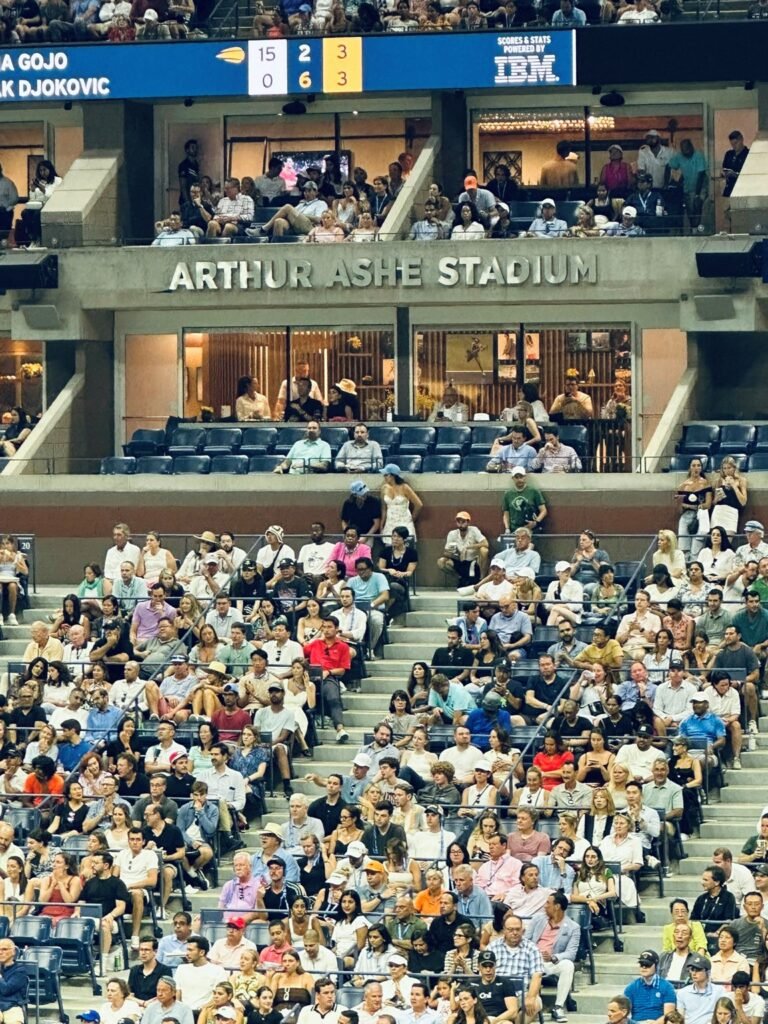


Comments are closed.